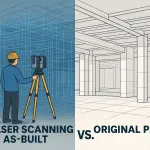Let’s all thank professor Roentgen for discovery of the Xray
Industrial CT is similar to the medical kind in that the underlying technology is the same. The mechanism for collecting dimensional information utilizes X-rays. As with so many other important scientific discoveries, Xrays were discovered in Germany in 1895 by a gentleman named Wilhelm Conrad Roentgen, a college professor. Little did Mr. Roentgen know that over a hundred years later we would be utilizing his discovery to do industrial CT scanning services. Xrays are really made of photons, so it would also not be incorrect to say that they are light. What we usually think of as optical scanners use light obviously. For these scanners the light is usually visible, such as structured light scanners that use cameras or laser scanners that use visible red or blue beams. Some laser scanners are not in the visible spectrum. But it is interesting to think about how all forms of 3D scanning use light waves one way or another. A big difference between industrial 3D scanning services and other forms of scanning is that with industrial CT scanning services, the light waves being used don’t stop or reflect off at the surface of the part like they do with other kinds of scanning, unless of course it is translucent or transparent. With industrial CT scanners, the light acts more like particles than waves and the particles continue past the surface of the part being scanned. The particle may or may not pass completely through the object being scanned, depending on how dense it is. Why do the types of light that industrial CT scanners use pass through parts, and other types of light get stopped or bounced? It is a question that is beyond our pay grade to answer. Some quick googling reveals that it may have to do with the wavelength of light being emitted. And how industrial CT scanners emit X-ray particles that “sneak past” the molecules that make of the object, at least until they collide with something. I am sure any physicist reading this will be laughing at just now far off that description was. But the truth is, we don’t have to understand how industrial Ct scanning services work exactly to benefit from them. We can gain from all of the hard work from those who have gone before us to develop this amazing technology, and focus our efforts on making things better through 3D technology. So whether you are scanning your teeth for cavities, your bones for fractures, or your part to receive a reverse-engineered CAD model, industrial CT scanning services help accomplish things that were not possible before. Develop new parts, inspect existing parts, compare parts to their design model or to each other, and monitor manufacturing for accuracy. Industrial CT scanning, while not the cheapest, is the wave of the future, or should I say particle of the future. Don’t miss the opportunity to get on board with the amazing service of industrial CT scanning services. Call Arrival 3D to discuss your industrial CT scanning service needs and receive a free quote.







